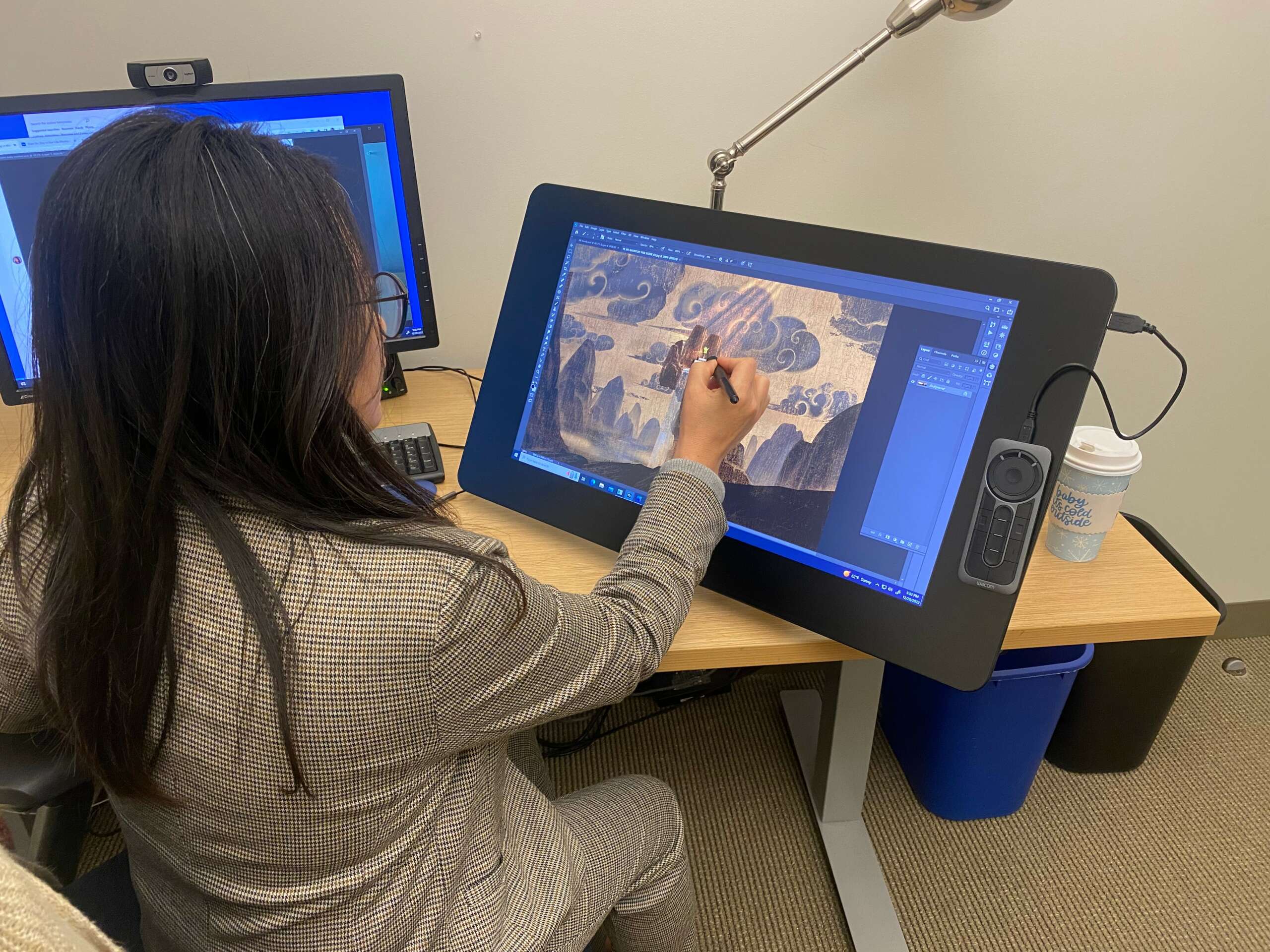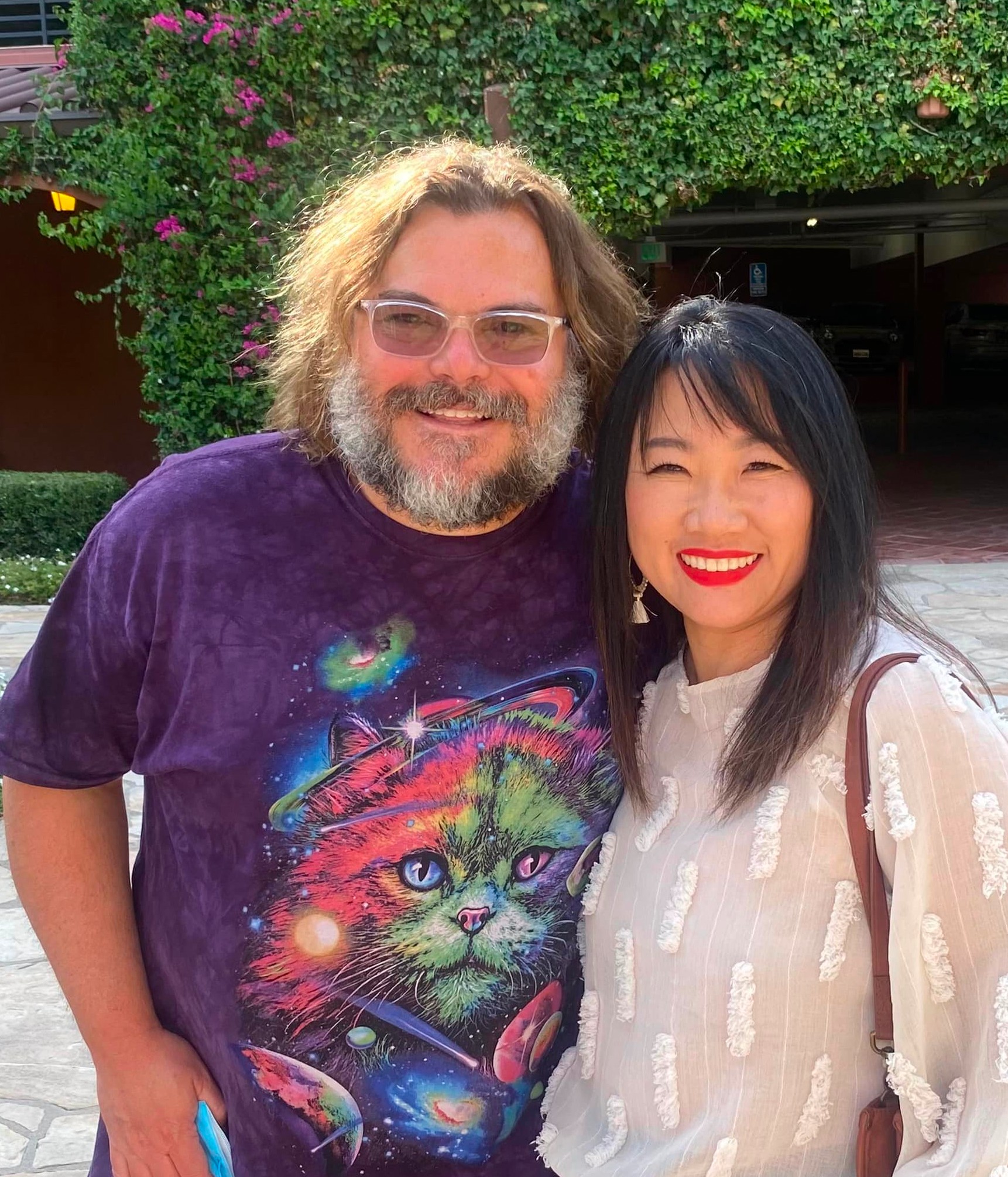We recently connected with Ellen Jin and have shared our conversation below.
Ellen, looking forward to hearing all of your stories today. Have you been able to earn a full-time living from your creative work? If so, can you walk us through your journey and how you made it happen? Was it like that from day one? If not, what were some of the major steps and milestones and do you think you could have sped up the process somehow knowing what you know now?
“Having been in the animation industry for almost three decades is nothing short of a miracle for me. I came to the States when I was 16 from Korea. Even though I went through college education at Otis for four years, I still could not put two sentences together to describe my artworks. The nature of the industry looks for people who can paint and draw, not brilliant speakers. Thank goodness. I entered the animation industry as a painter on my first try, as a trainee at an unknown animation company in the Valley, California.
The entertainment industry can be rather brutal for artists. We artists get hired based on projects for anywhere from 6 months to 2 years. The industry is small, and there are tens of thousands of animation-loving art students trying to break in. Some years everyone is working, and some years are slower. But how did I manage to stay for this many years…?
I have always been a hard worker with a little bit above-average artistic talent (I think). My goal has always been to be as good as the best fellow artists working in the room together. The strange thing is, whenever I work under art directors, they quit, and I get promoted. I was 29 when I first became an art director, and it has stayed that way ever since.
Being an art director as an introvert was challenging. It took many years for me to be comfortable with telling my fellow artists what to do and how to do things on the production. My artistic skill sets always got me into a leadership position, but my reserved personality always stopped me from communicating with my team and superiors. I think my sheepish attitude comes from not having much self-respect.” It is a typical trait of animation artists I discovered. If I knew this, I would shed my shyness earlier in my career. It would’ve helped me avoid a couple of blunders in my journey.
My day was busy fulfilling tasks. But when I came home I spent most of evening watching TV, and doing house chores.
I found out that other artists spent so much time making project on their own time, improving and developing their skills further. And I must say, these people are in a much better place than me now. While I spent most of my art director career in TV animation, those who invested in themselves moved on to theatrical movies. Am I envious of those who made it to higher position and better salary? You bet.


Ellen, before we move on to more of these sorts of questions, can you take some time to bring our readers up to speed on you and what you do?
“Did you know the animation industry is a $391 billion dollar industry worldwide? Disney, DreamWorks, Netflix, and all other studios invest tens of millions, and they make hundreds of millions in return. So many creative people spend their lifetime writing stories and creating images.
Art directing is part of a big machine that produces stories told with visuals and audio. My department and I are in charge of designing all the visuals that the stories need: characters, sets, props, and effects—anything you could think of on screen. My art direction has to work with the type of stories that are told. Understanding different art styles for different demographics is a skill. That is one of the most important skills that you need to have longevity in the ever-changing trends of the entertainment industry. You could either reinvent yourself and evolve, or you could fall behind.
One reason I’ve survived all this time is the versatility of the styles I could work with. You just say “yes” to the projects and figure out how to do it later. I am serious.
The thing that I regret the most is that I did not manage my career well in terms of having a social media presence. There is no excuse. Twenty years ago, when social media was in its infancy, I failed to recognize that someday, social media presence would replace my portfolio.”
There are a few recognizable achievement so far. I am an Emmy award, and Kids screen best award winner.
The Tinkerbell’s house I designed for one of the Tinkerbell movies, was actually built in Disneyland.
Are there any resources you wish you knew about earlier in your creative journey?
When I first got a job an an artist, I was just happy to be getting paid to paint for $500 per week. I got paid more as I gained more experience with promotions. After 10 years into my career, I finally started to be interested all different positions such as director, supervising producer and executive producer.
Those positions were recognized more, had more perks and got paid more. In order to be in that top EP position, one has to start as a storyboard artist or a writer. I don’t I am a writer, but I think I could’ve started a storyboard artist. And maybe, after twenty year later, around now, I would’ve been promoted to be an EP on a show.
My lack of interests in investigating deeper into the industry that I was involved in earlier in my career set me on a path in different way.


Can you share your view on NFTs? (Note: this is for education/entertainment purposes only, readers should not construe this as advice)
NFTs…I don’t know much about it. I think currently there are a lot of garbage out there. All I know is that good art will be aways valuable in any form or shapes.
Contact Info:
- Website: www.Ellenjin.com
- Facebook: Ellen Jin
- Linkedin: Ellen Jin
Image Credits
Art director Ellen jin Kungfu Panda , The Dragon Knight


